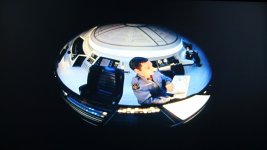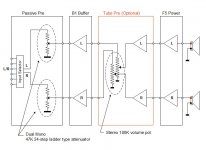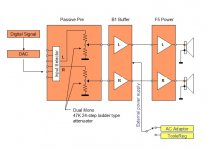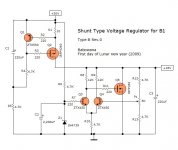Hello, Papa, Jacco, Choky, where are you Steen? and Manu and other friends. I share my joy with you.

Actually, I have had no drink and no smoking for more than six months. I have felt myself like a prisoner in the monkey house . . . hoping that I could have some beer or wine, tomorrow or the day after . . .
>>🙂<<

Actually, I have had no drink and no smoking for more than six months. I have felt myself like a prisoner in the monkey house . . . hoping that I could have some beer or wine, tomorrow or the day after . . .
>>🙂<<
Babowana, congratulations😎 It is so nice to see that you have the second one working. Looking forward to hear about your listening impressions, when you have had time to give it a fair trial🙂 I was busy with real life stuff, yesterday. I did pack some BC556C and BC546C's for you. I will send them next week (Dont worry, I am really well stocked with those)
BTW, ZM's suggestion is a really good one. The shorter the leads from reg to B1, the better.
I am jumping around on the floor right now, in pure joy. Hope you can have that beer soon.
🙂
BTW, ZM's suggestion is a really good one. The shorter the leads from reg to B1, the better.
I am jumping around on the floor right now, in pure joy. Hope you can have that beer soon.
🙂
steenoe said:Babowana, congratulations😎 It is so nice to see that you have the second one working........ Hope you can have that beer soon.
🙂
The motion is seconded!!!!
I think the big bad Demon of electrons, haunted the first board!! Now that the focus is off from it, you might get it to work with the BC's flying your way😉
🙂
🙂
I'm ashamed ... ...
...
I have solved the problem without knowing what has been a problem. Still, I can't figure out the reason. KSA733 . . . ??? I'm 100% sure that KSA733's have been the original devices of three terminals marked with correct names in the same way as KSA708's I have used on the second board and are working perfectly.
I have thought to re-assemble the first board with all new components. But, I have wasted all BD140's I have had during the trouble shooting.
A demon . . . ??? Most probably . . .
Anyhow, I'm happy in the end . . . mmmmmm . . .
mmmmmm . . .
Cheers,
>>🙂<<
 ...
...I have solved the problem without knowing what has been a problem. Still, I can't figure out the reason. KSA733 . . . ??? I'm 100% sure that KSA733's have been the original devices of three terminals marked with correct names in the same way as KSA708's I have used on the second board and are working perfectly.
I have thought to re-assemble the first board with all new components. But, I have wasted all BD140's I have had during the trouble shooting.
A demon . . . ??? Most probably . . .
Anyhow, I'm happy in the end . . .
 mmmmmm . . .
mmmmmm . . .Cheers,
>>🙂<<
My audio system is as follows: digital music signal or digital movie sound track >> DAC >> mono ladder type attenuators >> B1 buffer (with toolereg or with computer ac adaptor) >> stereo volume pot >> tube voltage gain pre >> F5 >> speakers.
Swapping the toolereg and the ac adator which are supplying 18Vdc to B1, I have listened to many different classical, jazz and blues musics with my system above. But, I could hardly distinguish any different sound when I have used the toolereg or the ac adaptor. I think that this might be because B1 is a 0dB gain buffer. So, I pressume that toolereg must be idetified as superior to other regulators for the voltage gain preamplifiers.
I have watched "2001: a space odyssey", again swapping the toolereg and the ac adaptor. The voice of HAL9000 . . . just the same . . . and the same J Strauss, R Strauss, Ligeti and Khatchaturian musics . . .
Cheers,
>>🙂<<
Swapping the toolereg and the ac adator which are supplying 18Vdc to B1, I have listened to many different classical, jazz and blues musics with my system above. But, I could hardly distinguish any different sound when I have used the toolereg or the ac adaptor. I think that this might be because B1 is a 0dB gain buffer. So, I pressume that toolereg must be idetified as superior to other regulators for the voltage gain preamplifiers.
I have watched "2001: a space odyssey", again swapping the toolereg and the ac adaptor. The voice of HAL9000 . . . just the same . . . and the same J Strauss, R Strauss, Ligeti and Khatchaturian musics . . .
Cheers,
>>🙂<<
Attachments
Hi B,
why two cascaded sets of attenuators followed by a gain stage?
Delete the stereo pot and change the gain stage to a follower.
Ensure that each buffer is at the signal source not at the receiver.
why two cascaded sets of attenuators followed by a gain stage?
Delete the stereo pot and change the gain stage to a follower.
Ensure that each buffer is at the signal source not at the receiver.
The mono ladder-type attenuator is a voltage divider formed by only two resistors in way of the music signal. If someone says that these two resistors are bad for the pure signal, I would not know what to say. Anyhow, the two mono ladder-type attenuators are acting as a balancer between the left and right sound level. At the same time, they work as a pre-volume before the stereo pot. I like to have this pre volume because it provides me with slower variation of the volume when I rotate the stereo volume knob, if you understand what I mean . . .
Cheers,
>>🙂<<
Cheers,
>>🙂<<
Babowana said:My audio system is as follows: digital music signal or digital movie sound track >> DAC >> mono ladder type attenuators >> B1 buffer (with toolereg or with computer ac adaptor) >> stereo volume pot >> tube voltage gain pre >> F5 >> speakers.
Swapping the toolereg and the ac adator which are supplying 18Vdc to B1, I have listened to many different classical, jazz and blues musics with my system above. But, I could hardly distinguish any different sound when I have used the toolereg or the ac adaptor. I think that this might be because B1 is a 0dB gain buffer. So, I pressume that toolereg must be idetified as superior to other regulators for the voltage gain preamplifiers.
I have watched "2001: a space odyssey", again swapping the toolereg and the ac adaptor. The voice of HAL9000 . . . just the same . . . and the same J Strauss, R Strauss, Ligeti and Khatchaturian musics . . .
Cheers,
>>🙂<<
Interesting... Enough people and I, have experienced strong subjective gains using my low and high voltage simplistic Mosfet shunts in NJFET RIAA, tube RIAA, DHT CCSed & parafeed line stage. I have also seen comments about strong subjective upgrade on Pass NS10 clone by the Toolreg team.
Babowana, for the sake of experiment, you might want to try this play chain: digital music signal or digital movie sound track >> DAC >> stereo volume pot >> B1 buffer (with toolereg or with computer ac adaptor) >> F5 >> speakers.
It will probably be easier to detect any difference in sound, when the B1 is driving the poweramp directly.
🙂
It will probably be easier to detect any difference in sound, when the B1 is driving the poweramp directly.
🙂
Yeah . . . have tried this way with different musics.
The external power suppliers for B1, both AC adaptor and TooleReg, have worked equally good for the sound coming through the whole system.
B1 seems to be not picky, accepting the different external dc suppliers as the same brand chocolates . . .
Cheers,
>>🙂<<
The external power suppliers for B1, both AC adaptor and TooleReg, have worked equally good for the sound coming through the whole system.
B1 seems to be not picky, accepting the different external dc suppliers as the same brand chocolates . . .
Cheers,
>>🙂<<
Attachments
steenoe said:
Another note: It is best to remove the CRC supply filter that you have in the B1, before connecting the Toolereg. Keeping them, will ruin some of the shuntregs performance, Mainly by destroying the regs flat output impedance, A 10uF filmcap is about right for C2, with no electrolytics to follow. If you still want local decoupling in the B1, then use filmcaps.
One more thing. When you have soldered everything and have it up and running you can calculate the excact current through the CCS: (Vled-Vbe)/R6=mA Vled is the forward voltage of D1, and Vbe is base-emitter voltage of Q5. The values must be measured in the actual circuit, to be precise.
🙂
I dont want to repeat, so I quote myself😀 Anyway, it is fully understandable if you dont want to modify the B1, but if you want the best performance from the shuntreg, you will have to take the CRC filter out, and use short supply leads. Your call, of course😎
BTW, transistors is in the air, headed for Mr. You🙂 Before using them on the bad board, I suggest that you check the board really carefully for solderbridges or small coppertraces not being etched away. Especially between the transistor solderpads. Scratch between the pads, just to make sure.
🙂
Hi, Steen
If I remove R1/C1 noise filter for another round of A/B test, the ac adaptor might complain saying unfair 😀
Anyway, I believe that Toolereg is superior to the ac adaptor and better fit for the audiophiles.
Waiting for the flying TRs . . .
Do you have anything you need from my side?
Cheers,
>>🙂<<
If I remove R1/C1 noise filter for another round of A/B test, the ac adaptor might complain saying unfair 😀
Anyway, I believe that Toolereg is superior to the ac adaptor and better fit for the audiophiles.
Waiting for the flying TRs . . .
Do you have anything you need from my side?
Cheers,
>>🙂<<
Babowana said:Waiting for the flying TRs . . .
Do you have anything you need from my side?
Cheers,
>>🙂<<
Naa, I couldnt close my drawers, so I had to get rid of something😀 Thanks for the offer🙂
BTW without removing the CRC its the poor Toolereg, thats complaining😉
🙂
Hi, all
Today is the first day of Lunar New Year. Happy Lunar New Year!!!
I have read through Papa's notebooks stealthily over the shoulders and read through about Zen amps, DIY OPamps, etc for years . . . It's time for me to apply them more actively for my developed diyaudio. Hmm . . . what about one shunt type voltage regulator.
I know that Zen Mod, Apassgear, Steenoe, Ctoole, Salas (sorry I don't remember all names) are plying dance jumps enjoing their shunties. I'm a jealous guy . . . Ahh . . . I have also built Toolereg successfully. Why not another one then . . . ?
I have learned the principle of shunt type voltage regulator from an old text book. The basis of this shunt has come from it.
Q1 and Q2 are providing a CCS of about 60-70mA. I have seen this type of CCS from Zen amps. Q3 and Q4 are making a simple OPamp with Q5, where Q3 and Q4 act for the error detector while Q5 is acting as a control element (i.e. shunt). I have copied Papa's diy opamp for this. R12, P1 and R13 is forming a voltage divider as a output voltage sampling circuit. The sampled voltages go through the error detector to the control element. I'm using IRFP240 and IRFP9240 for Q5 and Q2. Yes, they are too big for the required low load current. Nevertheless, I'm using them, to utilize things I have in my pocket.
Probably I don't need to have R9. I however like to keep this in case that there is a requirement for me to use IRFP9240 (P-ch mosfet) instead of IRFP240 (N-ch mosfet) for Q5.
R6, Z1 and C2 are providing a voltage reference where R6 decides the size of zener current while C2 is reducing zener noise and ripple and acting for a gentle start.
Maybe I'm talking too much in the first morning of Happy Lunar New Year . . .
Do you have any advice or comment on this? Too old fashioned style?
Cheers,
>>🙂<<
Today is the first day of Lunar New Year. Happy Lunar New Year!!!
I have read through Papa's notebooks stealthily over the shoulders and read through about Zen amps, DIY OPamps, etc for years . . . It's time for me to apply them more actively for my developed diyaudio. Hmm . . . what about one shunt type voltage regulator.
I know that Zen Mod, Apassgear, Steenoe, Ctoole, Salas (sorry I don't remember all names) are plying dance jumps enjoing their shunties. I'm a jealous guy . . . Ahh . . . I have also built Toolereg successfully. Why not another one then . . . ?
I have learned the principle of shunt type voltage regulator from an old text book. The basis of this shunt has come from it.
Q1 and Q2 are providing a CCS of about 60-70mA. I have seen this type of CCS from Zen amps. Q3 and Q4 are making a simple OPamp with Q5, where Q3 and Q4 act for the error detector while Q5 is acting as a control element (i.e. shunt). I have copied Papa's diy opamp for this. R12, P1 and R13 is forming a voltage divider as a output voltage sampling circuit. The sampled voltages go through the error detector to the control element. I'm using IRFP240 and IRFP9240 for Q5 and Q2. Yes, they are too big for the required low load current. Nevertheless, I'm using them, to utilize things I have in my pocket.
Probably I don't need to have R9. I however like to keep this in case that there is a requirement for me to use IRFP9240 (P-ch mosfet) instead of IRFP240 (N-ch mosfet) for Q5.
R6, Z1 and C2 are providing a voltage reference where R6 decides the size of zener current while C2 is reducing zener noise and ripple and acting for a gentle start.
Maybe I'm talking too much in the first morning of Happy Lunar New Year . . .
Do you have any advice or comment on this? Too old fashioned style?
Cheers,
>>🙂<<
Attachments
- Status
- Not open for further replies.
- Home
- Amplifiers
- Pass Labs
- New-building of my B1 buffer




